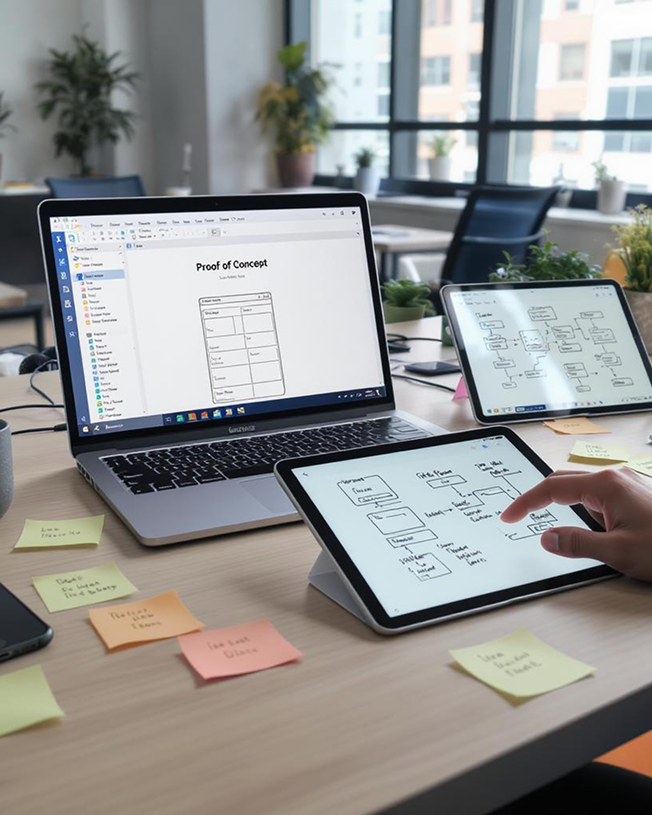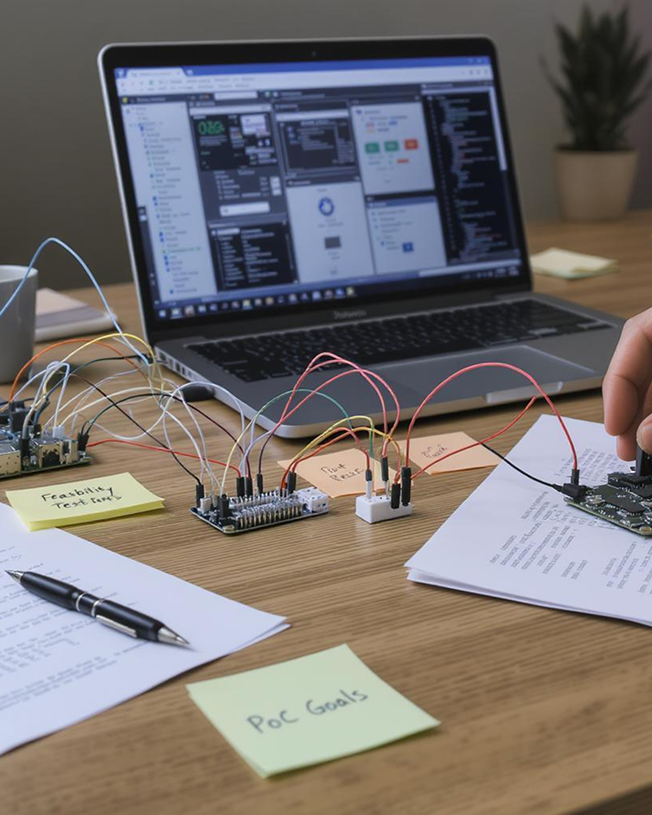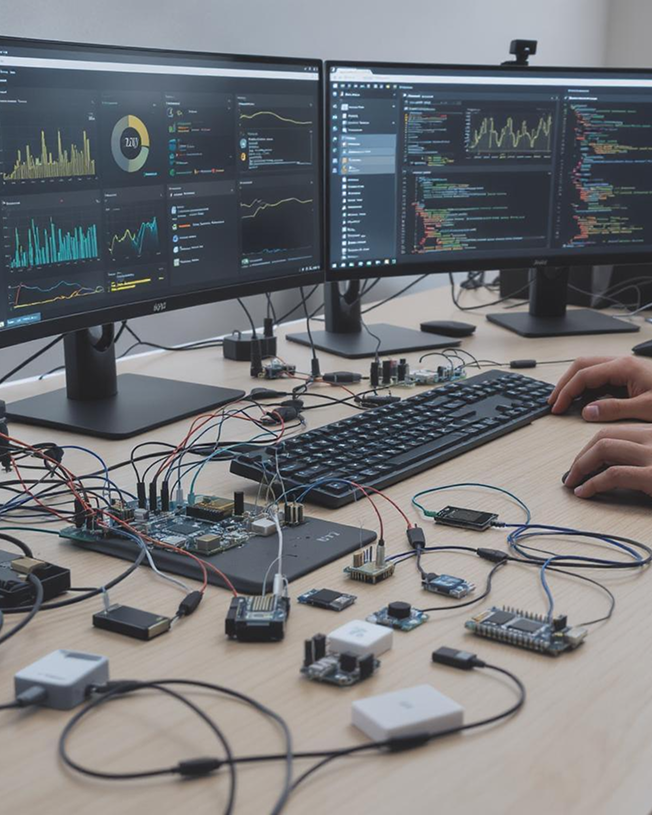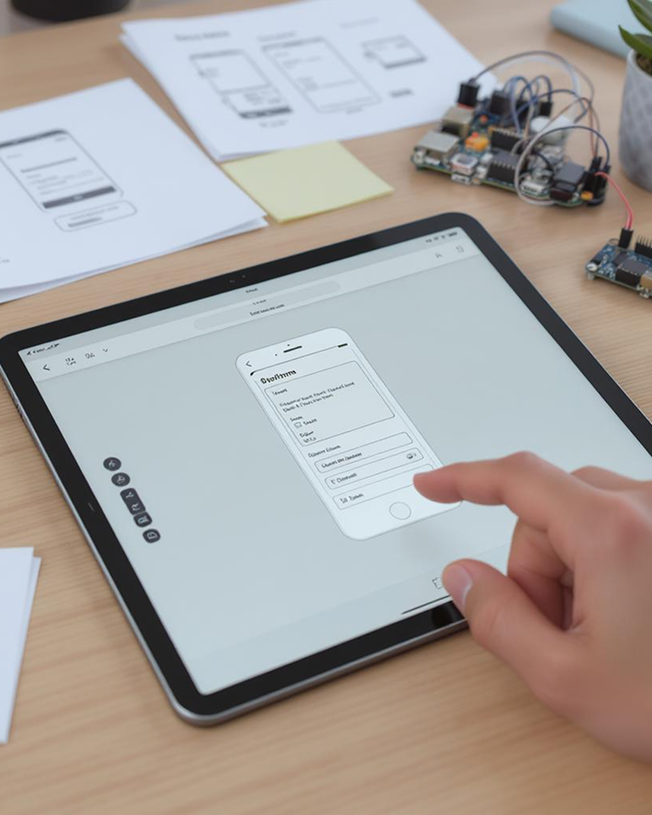MVP is a strategic approach to developing and launching an IoT product, allowing businesses to validate their ideas with real users while minimizing time to market. Nawatech offers PoC to MVP development services, helping businesses and startups turn concepts into functional prototypes, ensuring scalability and market readiness.
Get a QuoteWe cover every aspect of IoT development to ensure your business operates smarter, faster, and more efficiently.
Our tailored MVP development service covers Proof of Concept (PoC) to help businesses validate their project ideas and ensure they provide real value to users. We work closely with your team to build and evaluate a functional solution.
We offer comprehensive MVP development services, from concept validation to deployment, testing, and ongoing support. Our skilled developers create scalable and efficient MVPs that can evolve into fully developed products.
If you want to evaluate your product’s concept, our team can help by creating an interactive prototype that offers a realistic preview of the final user experience.
Our team will support you in transitioning from the MVP phase to full-scale product development. We help businesses identify key user challenges, create a structured development plan, and strategize the expansion of their MVP.




We follow a step by step process, from planning to deployment and optimization. To ensure our deliverables are scalable and secure IoT solutions that fit your needs.
The process starts with establishing a clear vision for the IoT product and outlining its objectives. This involves identifying the problem it addresses, defining the target users, and determining the desired results.
We begin by creating a fundamental prototype to assess the product's feasibility. Developing a Proof of Concept (PoC) involves designing a simplified model to confirm its technical viability.
The MVP stage focuses on creating a functional version of the product with essential features that meet its primary purpose. It is developed to gather early market feedback and validate its viability.
The last step involves gathering feedback from users and stakeholders to pinpoint areas for enhancement. The product undergoes continuous testing and refinement until it reaches a competitive level in the market.
PoC to MVP development is a structured approach to validating, refining, and developing an IoT product. It starts with a Proof of Concept (PoC) to test technical feasibility, moves to a Prototype to visualize the product’s design and functionality, and culminates in a Minimum Viable Product (MVP) with essential features for real-world testing and market validation.
A PoC helps determine whether your product idea is technically feasible before investing in full-scale development. It minimizes risks by testing core functionalities, ensuring that the technology can support your envisioned solution.
1. PoC (Proof of Concept): Tests the technical feasibility of an idea.
2. Prototype: Focuses on design and user experience, offering a visual representation.
3. MVP (Minimum Viable Product): A functional product with core features, built for market validation and gathering user feedback.
The timeline varies based on project complexity. A PoC can take a few weeks, a prototype may take a month or more, and an MVP can take several months to develop, depending on features and testing requirements.
Your MVP is ready when it successfully meets the core user needs, functions without major technical issues, and collects valuable feedback for future improvements. The goal is to launch with essential features, assess market demand, and iterate based on user responses.
Yes! The MVP stage is designed for scaling. Based on user feedback and market validation, additional features and improvements can be introduced, evolving the MVP into a fully developed product.
The cost varies depending on complexity, required technologies, and development scope. A PoC is generally the most affordable stage, while an MVP requires a larger investment due to added functionalities.
PoC to MVP development is valuable in industries such as healthcare, manufacturing, smart homes, agriculture, logistics, retail, and industrial automation—essentially, any sector where IoT solutions can optimize operations and improve efficiency.
We use a variety of modern technologies based on your project requirements, including IoT platforms, cloud computing, mobile and web development frameworks, AI/ML, and database management systems to build scalable and secure solutions.
Once your MVP gains traction, we help you scale the product, optimize performance, add advanced features, and expand its reach to ensure long-term success.